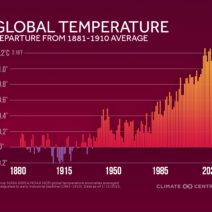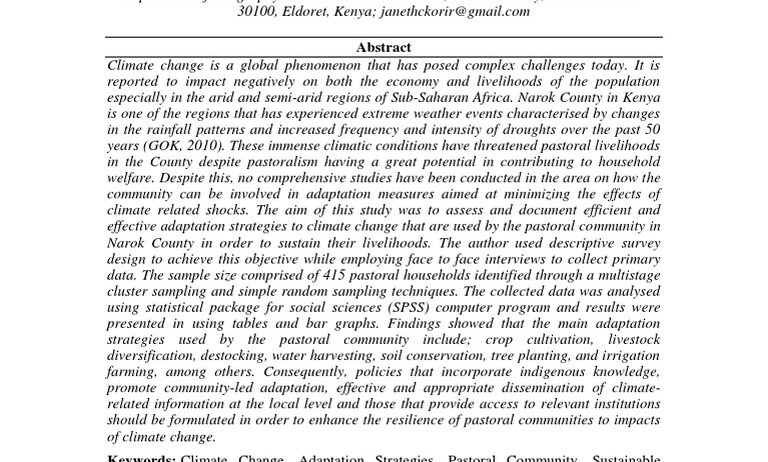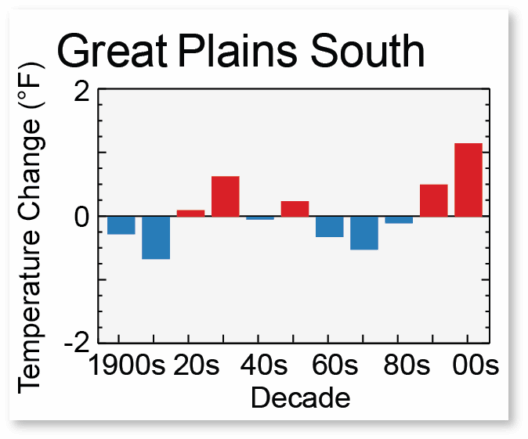As global temperatures continue to rise due to anthropogenic activities, it becomes increasingly imperative to explore effective adaptation strategies to mitigate the adverse effects of climate change. This text delves deep into practical measures that can be applied across various sectors and regions, considering diverse environmental and socioeconomic contexts. By adopting a multifaceted approach, we can enhance our resilience and sustainability in the face of escalating climatic perturbations.
1. Agricultural Adaptation
In the realm of agriculture, adjustments must be made to counteract the implications of shifting weather patterns, increased pest pressures, and water scarcity. Farmers can adopt climate-resilient crops that are engineered to thrive in higher temperatures and variable rainfall. Crop rotation and diversification can enhance soil health and reduce dependency on specific species, ultimately improving yield stability. Moreover, implementing precision agriculture techniques can optimize resource usage, decreasing waste and maximizing productivity.
Additionally, agroforestry presents an innovative solution. By integrating trees into agricultural practices, farmers can enhance carbon sequestration, improve biodiversity, and create microclimates that favor crop growth. Investment in soil conservation methods, such as cover cropping and reduced tillage, will also bolster resilience against erosion and nutrient loss.
2. Water Management Strategies
Water scarcity is a pressing concern exacerbated by global warming. To address this challenge, robust water management strategies are vital. Rainwater harvesting systems can be employed to capture and store precipitation during wet periods, providing a crucial resource during droughts. Similarly, constructing artificial wetlands can enhance groundwater recharge while offering habitat for diverse species.
Moreover, the adoption of sustainable irrigation techniques, such as drip irrigation and scheduling based on evapotranspiration rates, can significantly reduce water consumption. Integrating water reuse systems within urban infrastructures encourages conservation and enhances efficiency. On a broader scale, watershed management is essential for maintaining water quality and availability, necessitating collaboration among stakeholders in both rural and urban settings.
3. Urban Resilience Planning
As urbanization accelerates, the implications of climate change are particularly pronounced in metropolitan areas. Cities must develop robust resilience frameworks to address flooding, heat waves, and infrastructure stresses. Implementing green infrastructure, such as permeable pavements and green roofs, can alleviate urban heat islands while enhancing stormwater management.
Furthermore, creating and preserving urban green spaces is crucial for improving air quality and providing citizens with recreational areas. Smart city technologies, including real-time monitoring systems and predictive analytics, can optimize resource allocation and reduce the vulnerability of urban populations to climate-induced shocks.
4. Coastal and Marine Adaptations
Given the vulnerability of coastal regions to sea-level rise and extreme weather events, strategic adaptations are essential to safeguard livelihoods and ecosystems. Implementing natural barriers, such as mangroves and wetlands, can provide effective buffers against storm surges. Coastal retreat or realignment strategies should be considered for development projects in high-risk areas, along with the restoration of marine ecosystems that offer natural protection.
Moreover, promoting sustainable fisheries and marine resource management will contribute to the resilience of coastal communities. By reducing overfishing and engaging in aquaculture practices, stakeholders can strengthen the socioeconomic fabric of these regions while safeguarding biodiversity.
5. Policy and Governance Reforms
Robust policy frameworks and governance structures are essential for effective adaptation strategies. Governments at all levels must prioritize climate resilience in their agendas, enacting supportive legislation that encourages adaptation initiatives. Local governments, in particular, play a critical role in tailoring solutions to community-specific needs and fostering public participation.
Incentives for private sector investments in sustainable practices are paramount. Public-private partnerships can catalyze innovation and facilitate knowledge sharing, thereby enhancing adaptive capacity. Moreover, fostering international cooperation is crucial, as climate change is a transboundary issue that necessitates collective action.
6. Education and Community Engagement
Raising awareness and fostering education on climate change impacts and adaptation strategies is vital for empowering communities to take proactive measures. Engaging local populations in dialogues and decision-making processes can lead to more effective and culturally relevant actions. Educational programs tailored to various demographics—such as schools, community groups, and local businesses—are instrumental in promoting resilience at the grassroots level.
Social networks play a key role in disseminating information and mobilizing collective action. By leveraging existing community structures, stakeholders can foster a sense of ownership and responsibility toward climate adaptation initiatives.
Conclusion
Adapting to the inevitability of climate change requires an integrated approach, encompassing agriculture, water management, urban planning, coastal resilience, policy development, and community engagement. By employing diverse adaptations rooted in local contexts, we can create pathways toward sustainability. Each strategy contributes to a comprehensive, multi-layered response, emphasizing the importance of cooperation across sectors and communities. As we navigate the complexities of global warming, these practical strategies illuminate the way forward, ensuring a more resilient future for generations to come.






